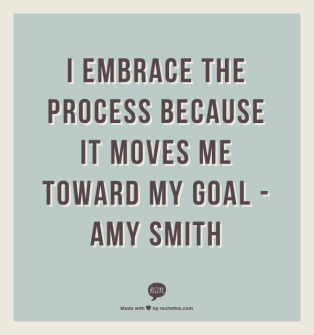
Guest post by Amy Smith
Amy Smith is living her dream job as an 8th grade middle school teacher in
Middle Tennessee. You can find her on Twitter at @JayhawkTN or read her
blog at http://
Back in my college days, my professor asked me to carefully detail the type of teacher I wanted to be. He knew that writing things down would help my brain focus on that image and wanted the image to represent what I considered my teaching masterpiece - the ultimate goals that I held to be important before I began my journey in a classroom.
I envisioned being a teacher who was creative, looked at students as individuals, and created life-long learners. My masterpiece held lofty goals, with beautiful images - one that I expected to attain immediately. I still look over that document in the summer. It makes me smile at my naivety in not realizing the constant adaptation I would need. There are aspirations on there that have changed, some have been achieved, yet the underlying soul of the piece is a constant growth.
You see, I am a work in progress.
In my heart I know that I will have to work toward my vision, and I will have to continually modify, rearrange, reassess, challenge myself, and continually learn. I embrace the process because it moves me toward my goal - a goal I will never reach because my original definition rendered it unattainable.
Being human means that I will make mistakes and that my teaching style will continue to evolve.
You see, not only am I a work in progress, but my students are, too. We work together in this way. There will be days that are fun, filled with potential, and ones where your heart leaps. Sometimes it comes in a whisper. A casual question, “Why do you think this?” Then the child stuns you with the unique beauty of his answer. Other times it’s a whole class movement. I see students so very excited about what is happening that the room almost vibrates from excitement.
On the other hand, there are days that are difficult as well. The struggle, the frustration, and the challenge are also important. Learning to work through, think critically, apply solutions are all essential skills in life. Those days should be embraced as well because the willingness to work hard indicates a level of trust that you are there to help them ultimately feel the success.
Therefore we are all works in progress. Imperfect by ourselves, but so much more as a part of a team.
Each day I center my work by asking the following questions:
- Why is this work valuable in my classroom? I want to continually keep a focus on what each child needs to be successful in my class, in high school, and most importantly, in life. This means that what happens in the room is not always the same for everyone. If I design a culture where kids are excited about learning, then we can set aside differences to work toward an environment where everyone can grow. In this way, what I do at the beginning of the year plays an important role in establishing a differentiated room. The path can be very different to reach a common goal.
- How will this work help build a community? Relationships are the heart of my classroom. During the awkward middle school years so many of them are dealing with doubts that I feel it’s important to tell them often that they matter. I try to look at them through the lens of a child’s eye to show them that nothing is impossible with effort and each other. I keep my own 8th grade photo in my desk drawer to remind myself of how I felt - difficulties with fitting in, feeling like I wasn’t good enough, worried that others would ridicule my thoughts. As an adult it’s easy to forget how the adolescent brain works. As an adult, it’s vital to SEE each child as a person of value who has something unique to offer the world. I take pictures on the first day and use them to learn names, write notes, and spark different conversations we may have in passing. I choose a day or two to share my lunch time with the kids to get to know them better, especially those I see as struggling. I smile.
- How will this work be valuable in life outside of my classroom? My goal is to convince each child to be a lifelong learner who embraces his passions. Fortunately, I teach a class that can easily adapt to offer choice. These connections to individual interests are vital. Free time is precious, and the world provides many distractions. The skill of being active in life is important unless I want students who are are content to let things happen to them instead of engaging in the ongoing conversation.
Middle school is the perfect age to help shape children’s habits into ones that embrace learning. It may not look the same day after day, or even hour after hour, but through constant refocusing, growth is attainable. I consider it an honor to have an opportunity to grow with my students.
Teaching is my masterpiece with the fingerprints of thousands of students dancing over it and forever changing the canvas.
What does your masterpiece look like?